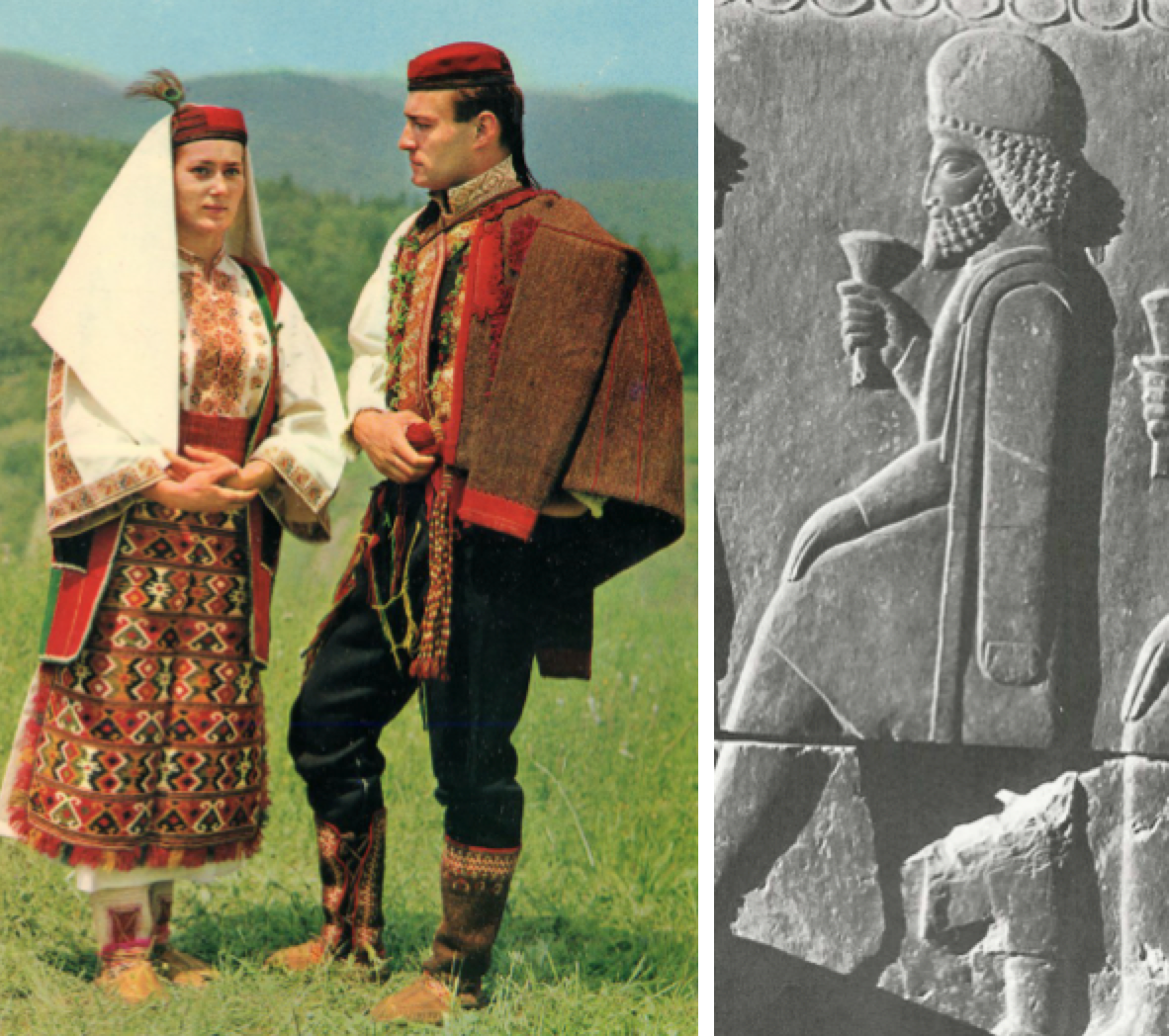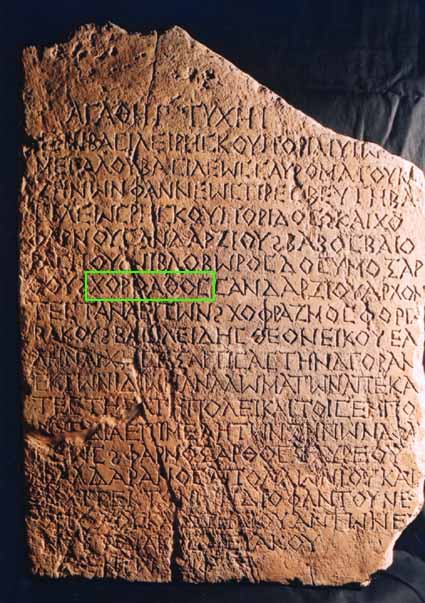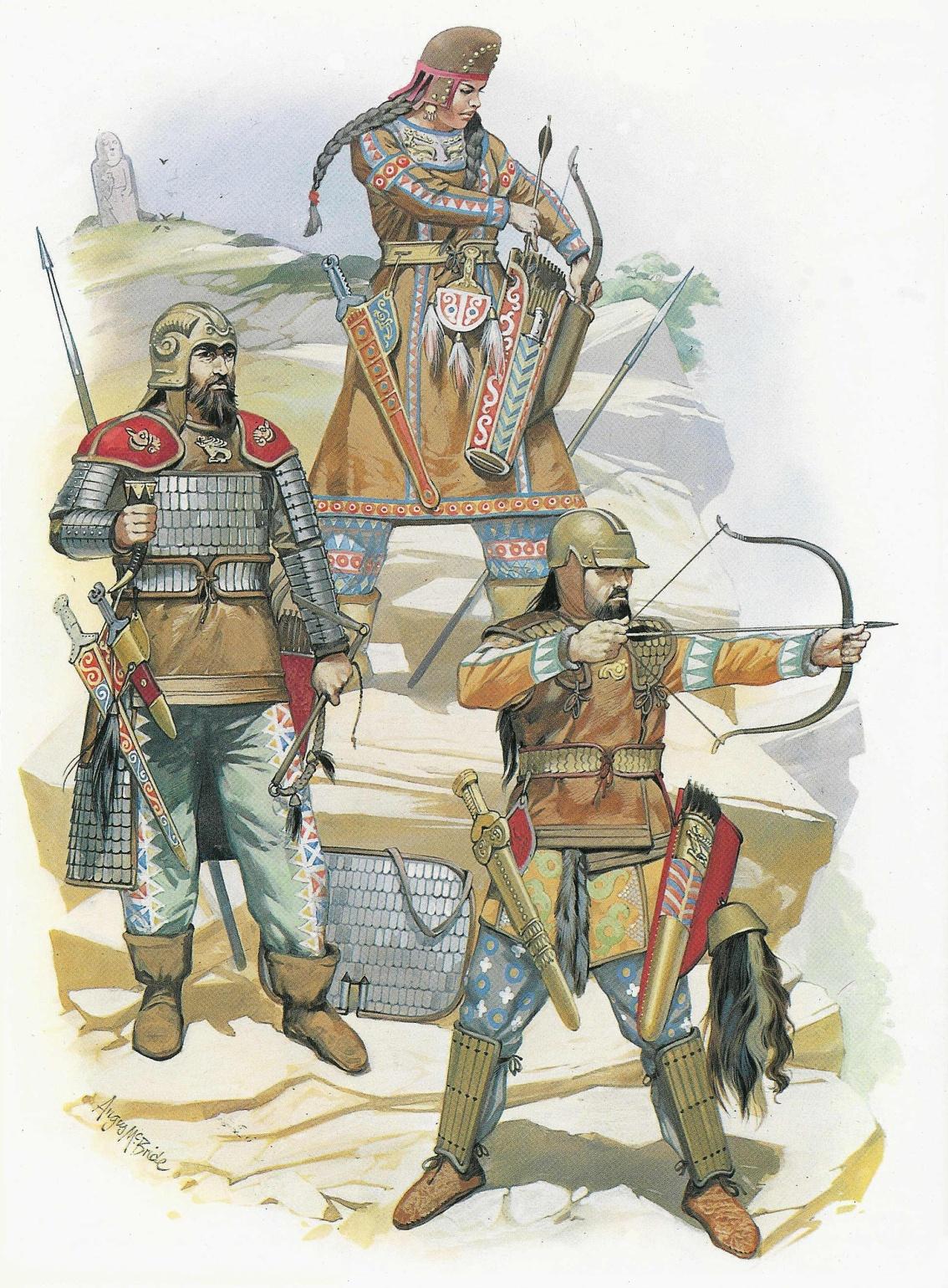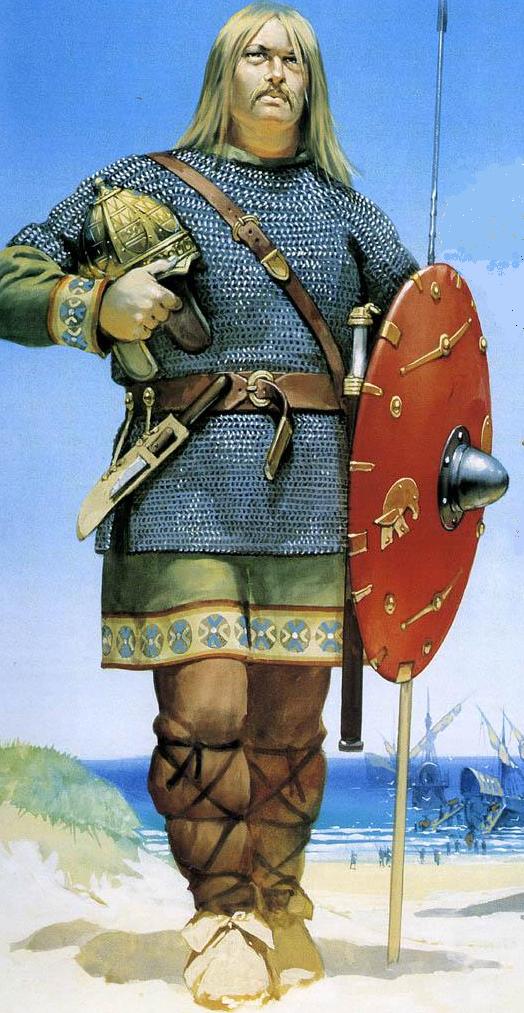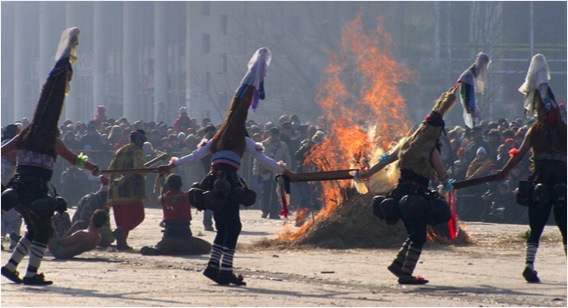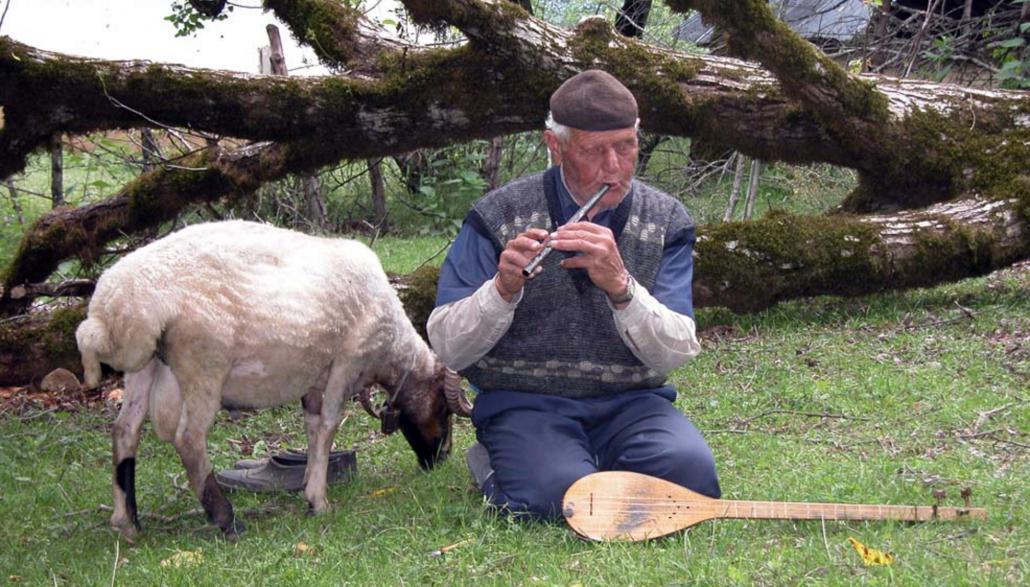The article “Common Origin of Croats, Serbs and Jats” has been written by Samar Abbas and published in the journal: Jat Jyoti, Vol.4 no.11 (Nov. 2003) p.13-18 (Magazine of the World Jat Aryan Foundation, 248, Ram Krishna Vihar, 29, IP Extension, Delhi-110 092).
Kindly note that the pictures/illustrations and accompanying descriptions do not appear on the original journal article by Samar Abbas.
========================================================================
Abstract:
Croats as Hrvati, Haravaitii, Arachosians or Sarasvatians, descendants of the ancient inhabitants of the Harauti province & the Haravaiti or Sarasvati River. Their mention on legendary inscriptions of Darius the Great. Croatian flag based on the chessboard, Croatian religion derived from primordial Iranic Sun-worship. Common origin of Croats and Serbs. Their relations with the Sarmatians, Saura Matii or Surya Madas, the Solar Medes. False claims of The Indian Express refuted. Scythian or Saka origin of Jats. Consequent commmon origin of Jats, Croats and Serbs. Genetic proof for the same is presented.
It is unfortunate that Dr. Sahib Singh Verma, Union Labour Minister, was not allowed to attend the recent World Jat Conference in Belgrade (“Sahib Singh wanted to visit Serbia to meet fellow Jats, PM put his foot down and spiked his bonding-in-Belgrade plans”, Indian Express, 21/9/2003). Sad indeed, because there actually do exist strong connections between Jats, Serbs and Croats. Several historians view these communities as sharing a common ethnic origin as is evident from a study of the following submissions.
Philology: Croats as Hrvatis
Let us commence our investigation with the Croats. The science of linguistics provides several connections with Iran. Thus, the Croats of Croatia call themselves “Hrvati” and their country “Hrvatska”, whence the Croatian domain name on the internet is .hr. The name “Hrvati” is derived from the Avestan province “Harahvaiti” (Greek: “Arachosia”). The scientific philological argument for the identification of the Croats with the Haravatis is given in (Sakac 1955, pp. 33-36; Sakac 1949, 1937)
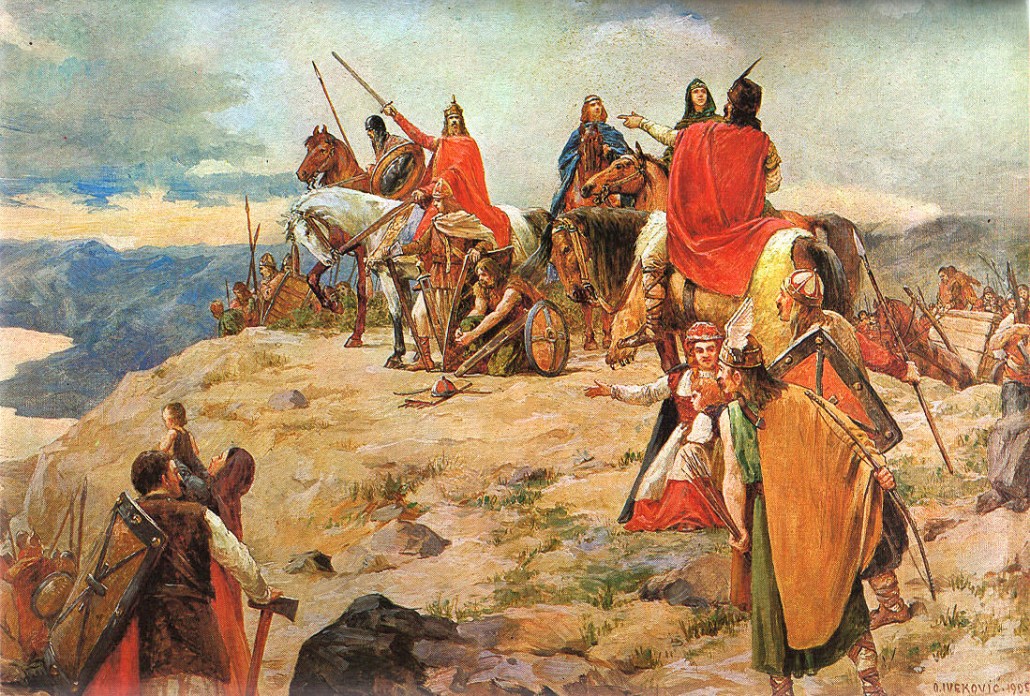 The Arrival of the Croats to the Adriatic (painting by Oton Iveković) (Source: Public Domain).
The Arrival of the Croats to the Adriatic (painting by Oton Iveković) (Source: Public Domain).
As Dvornik notes:
“P.S. Sakac thinks that he discovered the name ‘Croats’ in Darius’ inscriptions from the sixth century B.C. There an old Persian province and people are mentioned, called Harahvaitai, Harahvatis, Horohoati...” (Dvornik 1956, p.26).
After an earlier Persian citation of the Croats cited by Dvornik, there is another ancient mention of the “Horovathos” on two stone inscriptions written in the Greek language and script; this is dated to approximately the year 200 CE (housed in the St. Petersburg Archaeological Museum) (Source: Croatian History). This was discovered at the Black Sea region, in the ancient seaport of Tanais on the Sea of Azov in the Crimea.
Further, the Roman leader Ammanius Marcellinus mentioned that two cities arose in ancient Persia called Habroatis and Chroates. In this regard, Prof. Mandic writes:
“The Croats of the Don, then had to come in ancient times from Iran. On a stone inscription of the King Darius (522-486 B.C.) the nation of the Haruavat-is appears among the 23 subject nations. The Persian sacred books of the Avesti (Vendidad) call that nation the Harahvaiti. The provinces settled by that nation encompassed in those times the southern half of modern south Afghanistan, the whole of Baluchistan and the eastern part of modern Iran. In that ancient province ought we to look for the paleo-fatherland of the modern Croats.” (Mandic 1970, Chapter 1)
Furthermore, the name of the Croatian capital, Zagreb, is related to the Zagros mountain range of Iran. The Dinara mountains in Dalmatia and the Dinar currency may be connected to Mount Dinar (Dene) of Iran. The name Serbia is similar to the Seropi or Surappi River in Elam. Moreover, certain authorities note that the name of the Carpathian mountains is derived from Croatia:
“Here the Iranian Croats mingled with the numerous local Slavic tribes and adopted the Slavic language from them. Meanwhile after the collapse of the Hunnic Empire the Croats organized the local Slavs into a state and gave them their national name. Before the invasion of the Avars ca. 560 the White or Western Croats created along with the Antes a great state extending north of the Carpathians from the upper Elbe to the upper Dniester.” (35: Niederle, 263-266; Dvornik, The Slavs, 277-297) R. Heinzel is of the opinion that the Carpathians of the old Germanic Hervarsaga took their name from the Croats who called them the Harvate mountains i.e. Croatian mountains. (36: Heinzel, 499; Dvornik, op. cit., 284, sq.)” (Mandic 1970, Ch.1)
Indeed, philologists trace the migration of the Croats from Harahvati (Arachosia, Sarasvati) in the following manner using fossil place-names along the path of migration:
- Harahvaiti and Harauvati in Iran and Afghanistan
- Hurravat and Hurrvuhe in Armenia and Georgia
- Horoouathos in Azova and the Black Sea
- Present day Croats Horvati and Hrvati along the Adriatic
It is important to note that the Avesta – the sacred scriptures of the ancient Aryan Zoroastrians – mentions the lands settled by the Iranic peoples. Hapta-Hindawa (ie. the Punjab, “Sapta-Sindhu” in Prakrit) is mentioned in the Avesta amongst the Irano-Aryan lands. Even today, the Punjab is the primary home of the Jats. Since the Croats are named after the Harahvaiti or Sarasvati River, and the Jats are the present-day inhabitants of the lost Harahvaiti, it would appear that Jats and Croats would be very closely related indeed.
Vexillology
Further compelling evidence comes from vexillology (the scientific study of flags). Thus, the Croatian flag is based on the chessboard, whence many Croatian historians consider Croats as eponymic descendants of the Sassanid chess master and minister Bozorgmehr, just as the Kambojas are eponymic descendants of Cambyses and Georgians are viewed as the eponymic descendants of King George II. In this regard, Prof. Mandic notes:
“Ancient Croatian folk art bears eastern and Iranian traces, particularly the Croatian “troplets”. The Croats also brought over from Iran their national coat of arms with its 64 red and white checkers” (11: Strzycowskyi, 15-63, 156-181; Dado-Peranic, op.cit., 21-24; Mandic Hrvatski kockasti grb, 639-652)” (Mandic 1970, Ch.1).
Furthermore:
“The organization of the state among the southern Croats with the king, bans and zupans at its head similar to that of the northern Croats; in addition the religion, national customs, dress and arts of the southern Croats bear Iranian traces, just like the Croats in the north” (Mandic 1970, ch.3).
Indeed, a total of 120 Croat and non-Croat university professors and several academics have published 249 research works elaborating the Old Iranic origin of Croats (Tomicic 1998).
Folklore
A researcher notes similarities in folklore as well:
“There are old Croatian customs and national poems that have been cited as evidencing lingering traces of the fire and sun worship of the Iranians. Fire, the essence of human origin, the sun, and the great boiling cauldron around which the warriors spring in the age old kolo or circle dance, all these are ingredients in the national lore of the Croatian nation. The Croat vilas or fairy witches resemble the peris of Iranian mythology. Then there is the legendary Sviato zov, the personification of strength, a being almost too huge for the earth to bear. He is strongly reminiscent of the “elephant-bodied” Rustum of Persian legend” (Guldescu 1964, pt.1.II).
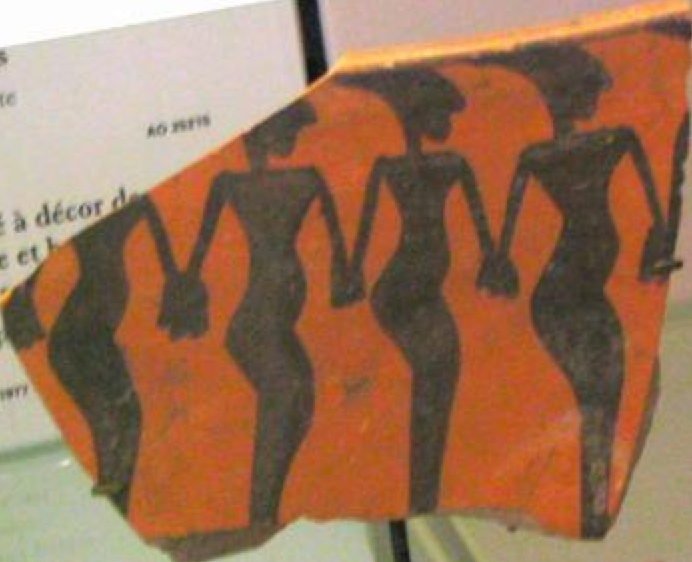 The circle dance partly seen on c.5000 BCE (?) ceramic piece (Louvre museum) from Cheshmeh Ali in the ancient Rayy region (near modern-Tehran, Iran) (Source: Iran Atlas). Other ceramic pieces like the above can are also housed at the Iran Bastan Museum. The Kurds in general have retained this ancient dance form. Despite vast geographical distances and the passage of thousands of years, variations of this dance can still be seen not only among the Croats but also among several eastern European, Anatolian and Caucasian regions.
The circle dance partly seen on c.5000 BCE (?) ceramic piece (Louvre museum) from Cheshmeh Ali in the ancient Rayy region (near modern-Tehran, Iran) (Source: Iran Atlas). Other ceramic pieces like the above can are also housed at the Iran Bastan Museum. The Kurds in general have retained this ancient dance form. Despite vast geographical distances and the passage of thousands of years, variations of this dance can still be seen not only among the Croats but also among several eastern European, Anatolian and Caucasian regions.
Research studies on Croatian clothing reveals similarities with Sassanian and other Iranic styles both in terms of male and female clothing.
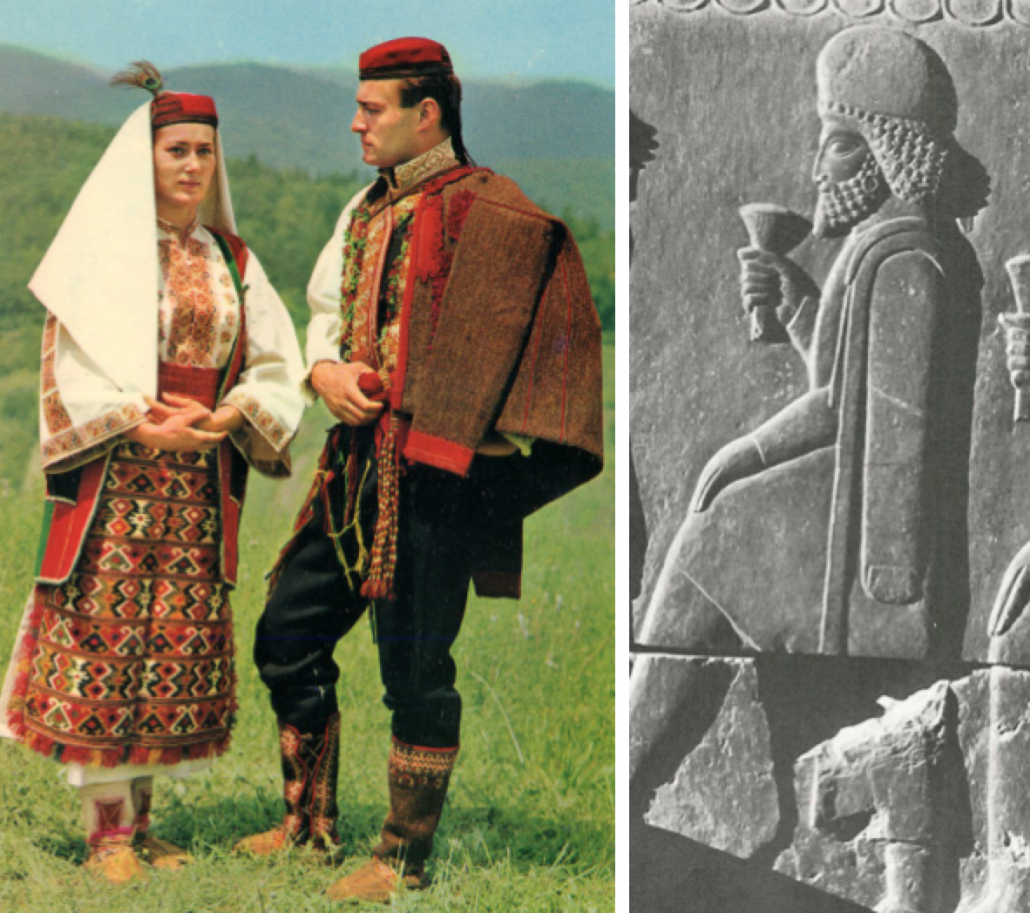 (Left) Traditional Croat attire (Source: Folk Costume) and (Right) Mede nobleman at Persepolis (Source: Photo by Moradi, 1971). The lady’s embroidery is almost identical to that seen among tribal elements in Iran, notably Kurds and Lurs. Her shirt nbears striking parallels to those produced by the Kurds of Khorasan in NE Iran and the front panel of her skirt also found among Iran’s tribal elements. Her cap features a peacock feather; the peacock is a sacred entity in ancient Iranian mythology, as seen among present-day Yezidi Kurds. The gentleman’s attire has stylistic parallels among Iran’s nomadic tribes, with his boots reminiscent of ancient soft Iranian riding boots. What of interest however is the man’s ancient Iranian Kandys slung over his shoulder: the Kandys was a sign of nobility in ancient Persia as seen among the Perso-Mede nobility of Persepolis of the Achaemenid Empire thousands of years ago in 6th – 5th Cent. BCE. The kandys is also seen among Gothic nobles from the 5th century CE.
(Left) Traditional Croat attire (Source: Folk Costume) and (Right) Mede nobleman at Persepolis (Source: Photo by Moradi, 1971). The lady’s embroidery is almost identical to that seen among tribal elements in Iran, notably Kurds and Lurs. Her shirt nbears striking parallels to those produced by the Kurds of Khorasan in NE Iran and the front panel of her skirt also found among Iran’s tribal elements. Her cap features a peacock feather; the peacock is a sacred entity in ancient Iranian mythology, as seen among present-day Yezidi Kurds. The gentleman’s attire has stylistic parallels among Iran’s nomadic tribes, with his boots reminiscent of ancient soft Iranian riding boots. What of interest however is the man’s ancient Iranian Kandys slung over his shoulder: the Kandys was a sign of nobility in ancient Persia as seen among the Perso-Mede nobility of Persepolis of the Achaemenid Empire thousands of years ago in 6th – 5th Cent. BCE. The kandys is also seen among Gothic nobles from the 5th century CE.
White Croatia, Red Croatia, Green Croatia
The Iranic origin of Croats is in fact the only way one can comprehend the traditional distinction existing between White Croatia, Red Croatia and Green Croatia:
“After the Iranian fashion the ancient Croats ascribed a specific colour to each of the four cardinal points of the compass in the territory which they inhabited. The colour white designated the west, red the south, green the east, and black the north” (10: Saussure, Le Systeme 235-297; idem, L’origine des noms 23; Sakac, op. cit., 37-40) Hence White or West Croatia, Red or South Croatia and Green or East Croatia.” (Mandic 1970, Ch.1)
Further, Dobrovich notes:
“It should be noted that only the thesis of the Iranian origin of the Croats can explain the name “Horvath”, the title of a Croat dignitary Banus, the names “White” and “Red Croatian”, and the Bogumile phenomenon. According to this theory, the Croats were a branch of the Caucasian Iranians, who lived somewhere in the western Caucasus during the era of the Roman Emperors. The Caucasian Anten were another branch of this group.” (Dobrovich 1963)
Let us conclude this section on Croats with the words of the learned Prof. Mandic:
“The oldest historical evidence, the ancient Croatian social organization, religion, national customs and art indicate that the Croats are of Iranian origin.” (Mandic 1970, Concl.)
Sarmatians, Sauro Matii, Surya Madras or Solar Medes
Now, the exact path of migration of the Croats from Iran to the Balkans is still disputed. Some hold that they migrated via Anatolia, others that they migrated via Central Asia and the Pontic region. Some of the latter historians link the Sarmatians with the Croats and Jats. Thus, Dvornik traces both Serbs and Croats back to the Sarmatians of Southern Russia (Dvornik 1956). The Sarmatians were generally identified as Scythians. Thus, Sulimirski, author of “The Sarmatians” also makes mention of the referral of the Emperor’s to the Belochrobati or White Croats who “exhibited certain Sarmatian characteristics …
A reconstruction by Cernenko and Gorelik of the north-Iranian Saka or Scythians in battle (Cernenko & Gorelik, 1989, Plate F). The ancient Iranians (those in ancient Persia and the ones in ancient Eastern Europe) often had women warriors and chieftains, a practice not unlike those of the contemporary ancient Celts in ancient Central and Western Europe. What is also notable is the costume of the Iranian female warrior – this type of dress continues to appear in parts of Luristan in Western Iran (for more on this topic see – Fezana article on Ancient Iranian Women).
The name Sarmatian is an Anglicization of the original Sauro Matii, the Latin form of the Prakrit Surya Madra or Surya Mada. The name means “Solar Medes”, in English, another testimony to the worship of Surya, or Cyrus, the Ashur of Assyria, the Ahura Mazda of the Zoroastrians, the splendid Sun-god of the Iranic peoples. In this regard, Mandic notes:
“Indeed from the end of the I to III century A.D. in the city-state of Tanais, in the region of the Don, lived various Iranian tribes of Samatians as well as Croats who must have been Iranians” (4: Concerning the Iranian tribes in present-day southeastern Russia around the Don and the Iranian origin of the Croats, see: Niederle, I, 321-434; Rostovtzeff; Vasmer, I; Hauptmann; Nartical; Sakac, 313-340; Dabo-Peranic.
For a summary of the theories on the Croatian name see: Sisic, Povijest Hrvata 238-240) Furthermore the national name “Croat” is of Iranian origin. According to the Russian Vselod Miller the name “Croat” comes from the Iranian word Hor-va (t)u meaning: the sun’s bed or path. (5. Miller, 259 sq.) M. Vasmer derives the Croatian name from Hu-urvata meaning, “friend”. (6. Vasmer, op. cit., 56) And the terms used to designate the high officials among the Croats, “kral, ban, zupan”, are of Iranian origin. (7 Sakac, The Iranian origins of the Croats, 30-46; RP 195-201) (Mandic 1970, Chapter 1)
Slovaks & Jats
Prof. Mandic notes:
“The great resemblance between the Croatian and Slovak languages tell us that the Croats for the most part moved south from northern Slovakia. For they are far nearer to each other in affinity than to any other Slavic language.” (Mandic 1970, Ch.1) Thus, the Slovaks would also share the same Saka origins as the Croats and Jats.
Bosnia
Regarding the roots of Bosnians, Dodan notes that Bosnia is historically a Croatian land, that Bosnia belonged to Croatia in the early mediaeval times, that the majority of Bosnian population used to be and are still Croats, and that mediaeval Bosnian kings were ethnic Croats. Even their surnames end in “-an”. Dodan quotes Draganovic’s and Mandic’s research according to which 95 % of Muslims and 30% of Serbs are actually Croats. He also elucidates the Iranian roots of the Croatian people (Dodan 1994).
Serbs
Now, we turn to the connection with the Serbs. Several historians maintain that the Serbian ruling caste shared the same origin as the Croats. Prof. Malcolm recently wrote a book “Bosnia” (Malcolm 1996), in which he clearly elucidates the Iranic origin of both Serbs and Croats. For instance, Prof. Salzman notes while reviewing Malcolm’s first chapter:
“The Croats and Serbs (who were either Slavic tribes with Iranian ruling castes or Iranian tribes with Slavic subjects) arrived in the Balkans in the 620s, a land already occupied by the Slavs.” (Salzman 1999)
The view of Prof. Malcolm is thus that the Croats and Serbs were originally Iranic speakers who adopted a Slavic language (Malcolm 1996). Examples of a conquering immigrant group adopting the language of its surrounding subjects abound in history. For example, the Scandinavian Normans adopted the Romance French language in Normandy, while their ruling kinsmen in England adopted Anglo-Saxon; the Germanic Franks, Merovingians and Carolingians adopted the Romance French language; the Nordic Visigoths adopted the Romance Spanish language; the Germanic Lombards adopted the Romance Italian language, and the Tungus Manchu adopted the Chinese language of their subjects. Likewise, the Jats were originally speakers of Scythian or East Iranic languages, who subsequently adopted an Indo-Aryan language. Hence, that the Iranic Croats and Serbs should adopt a Slavic language would not be unusual in any way.
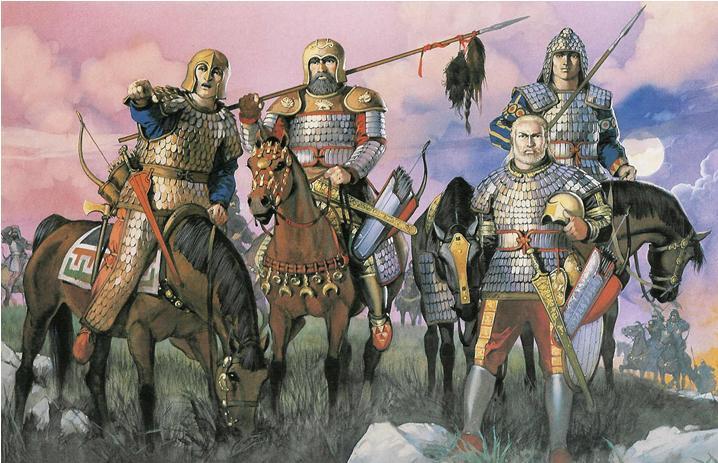 Scythians on the steppes of the ancient Ukraine. Scholars are virtually unanimous that the Scythians were an Iranian people related to the Medes and Persians of ancient Iran or Persia (Painting by the late Angus McBride).
Scythians on the steppes of the ancient Ukraine. Scholars are virtually unanimous that the Scythians were an Iranian people related to the Medes and Persians of ancient Iran or Persia (Painting by the late Angus McBride).
The Croats were also commonly named by the medieval chroniclers as “Goths”:
“The old Croatian chronicle ‘The Kingdom of the Croats’ and the ‘Chronicle of Pop Dukljanin’, based on Croatian national tradition and on the ancient records, states that the Croats whom they misnamed the Goths arrived for the north through Pannonia and Templana (6) in Dalmatia, which they conquered and settled. (7)” (Mandic 1970, ch.3)
This is important because the ethnonym “Jat” is widely considered a variant of “Goth” and its Greco-Latin variant “Getae”. In this connection, Prof. Lozinski notes: (Lozinski 1964, Vernadsky 1952)
“Professor Vernadsky [25. Vernadsky, G., Ancient Russia (New Haven, 1951), pp. 50-55; an older, less scholarly attempt in this direction: Cuno, J. G., Forschungen im Gebiete der alten Voelkerkunde. Die Skythen (Berlin, 1870), pp. 225-286] was the first, in modern times, to suggest that the Slavs had direct Iranian antecedents. The derivation of both names from religious designations, as suggested above, may be considered as additional evidence, especially as most of the Slavic gods bear purely Iranian, or Indian, names” [26. Vernadsky, G., Kievan Russia (New Haven, 1951), pp. 50-55; Krappe, A. N., “La chute du paganisme a Kiev,” Revue des eludes slaves, XVII (1937), 208. Rozwadowski, J., “Stosunki leksykalne miedzy jazykami slowianskimi a iranskiemi,” Rocznik orientalistyczny, I (1914/15), 95-110, esp. 110]
One of the Slavic groups, the Poles, called themselves Sarmatians; this name was recorded very early in Western Medieval chronicles [27. Ulewicz, T., “Okolo genealogii sarmatyzmu,” Pamietnik slowianski, I, (1949), 105-107], which lends credence to the traditions recorded in Polish chronicles edited at the waning of the Middle Ages, according to which they were in touch with the Iranians. [28. Bohomolec, F., Zbior dziejow polskich (Warszawa, 1767-68), III, Cromer M., Kronika, 5, 17, 19, 28; IV, Guagnino, A., Kronika Sarmucyey europeyskiey, 1 f., 7, 13, 16, 513.; Magistri Vincenti ep. Cracoviensis, Chronica Polonorum, ed. A. Przeidziecki (Krakow, 1862), 76 (cf. Paszkiewicz, op. cit., 360); Bielski, M., Kronika Polska (N. ed., Krakow, 1597), Introduction, passim., cf. Chrzanowski, I., Marcin Bielski (Lwow, 1926), 101-108, 504.]
Iranian-speaking Alan warrior circa 5th century CE (Painting by the late Angus McBride). The descendants of the Alans are found in the Caucasus as well as in the old Iranian province of Ard-Alan (Royal House of Alan) in western Iran. The legends of the Alans are recalled in the Kurdish folklore epic “Memi-Alan o Zhin e Bohtan”.
In Antiquity the Sarmatians, as is well known, were the Alans. [29. Vernadsky 1952] The meaning of the name “Sarmata” in Iranian is the “council.” [30. Vernadsky, G., and Dzanty, Dzambulant, “The Ossetian Tale of Iry Dada and Mstislav,” Journal of American Folklore, LXIX (1956), 234, n. 39.] It refers not to the nationality or language, but to the social organization of the Alans, ruled by a supreme council, appointing the king. [31. Strabo, XI, ix, 3.] The role of the council in early Slavic history is well known, especially among the Western Slavs. Thus the social, or political, organization of the Iranian Alans and Polish Slavs offers evidence of their affiliation.” (Lozinski 1964)
Bulgarians
It may also be stated that several scholars have noticed Iranic elements amongst the Proto-Bulgarians. (Beshevliev 1967, Schmitt 1985)
The celebration of “Surva” in modern-day Bulgaria. Local lore traces this festival to the Iranian God Zurvan. This folklore system appears to be linked to the Bogomil movement. Interestingly, much of the Surva theology bears parallels with elements of Zurvanism and Zoroastrianism (Picture Source: Surva.org).
Anthropology
The Iranic or Irano-Aryan race as a whole is dolichocephalic (long-headed), leptorrhine (having long, narrow noses), tall, robust, dark-haired, large-boned and fair-skinned with straight hair. These features are found amongst the Jats, Pathans, Persians, Rajputs and Kurds.
Elderly Talysh man in Gilan relaxing with his flute as his sheep grazes next to him (Source: Fouman.com). Iran has been multi-faced in several ways since ancient times, with its Indo-European character linking her to both India and Europa.
Due to the common features of Iranic skeletons with Nordics, some authorities consider the Nordics and Iranics as belonging to a common Nordic-Iranian macro-race. It is a further strong support for the Iranic origin of Croats and indeed, West Slavs in general, who display strong Iranic racial features.
Thus, the majority of Croatians today tend to be tall statured, with narrow facial features. Many historians consider these western Slavic features to be a trait passed on from the Iranic tribes mentioned above. The Alans in particular are thought to have had considerable impact on the Croatian racial “type”.
Now, there are three sub-types of Croats proper: Dinaric (Iranoid race), Mediterranean (Latinoid race) and Panonian (Slavoid race) The Dinaric type to which many Croats belong is often viewed as an Iranic sub-type:
“In the central mountainous regions settled by the Croats upon their arrival on the Adriatic the Dinaric type of Croat developed. This type is quite remote from the general Slavic type. The Dinaric Croats are tall in stature (ca. 1.8 metres), long-headed but with a skull of short circumference (cephalic index of 80-85)” (Mandic 1970, ch.3).
The main feature of the Dinaric sub-type of Iranics is that the head is long when viewed from front, but the circumference is short, giving the illusion of brachcephaly when viewed from the top. It is common amongst Armenians as well, and is often viewed as a breeding isolate of the Iranoid race.
Refuting the view that the Croatians were of Illyrian or Roman stock, Mandic notes:
“…. Nevertheless one has to say that the contribution of the local Romanized remnants [Illyrian] of the prehistoric Dinaric folk, hardly amounted to more than 20% to 30% in forming the Dinaric Croat (Mandic 1970, ch.3). These Mediterranean Croats are “intermediary in stature, a little smaller than the Dinaric type. They have quite oval skulls, dark hair and eyes and an olive complexion.”
The Panonian Croats, however, are largely descendants of the Slavic populations. The Slavoid race in general (to be distinguished from the speakers of Slavic languages) is short-statured, brachycephalic (round-headed), with blond hair. Thus:
“When the Croats conquered Lower Pannonia and Savia they at one began to assimilate with the Kaikavian Slavs of those areas. Out of that came the third type of Croat, the Pannonian, of intermediate stature, blond hair, ruddy complexion and of a rather sizeable cephalic index. …. [A] conspicuous type of Pannonian Croat was preserved up until this day. They of all the Croats are the closest to the general Slavic type in their physical and psychological make-up (88)” (Mandic 1970).
Thus, the round-headed blond Panonian Croats are not members of the Iranoid race, but instead are of the round-headed Slavoid race. They are, however, outnumbered by the Iranic or Dinaric Croats, who form the dominant element of Croatia
Genetics
A scholarly Croatian society called ZDPPH recently held a conference on the Iranic origin of Croats, where genetic evidence was presented. According to the society’s president Nedjeljko Kujundzic:
“Swedish geneticists have confirmed, in 75 percent of cases, that Croats are of Iranian origin.” (Hina 2000)
Two days after the news conference, the book “Indo-Iranian Origin of Croats” by Mate Marcinko was released in which much additional proof was presented.
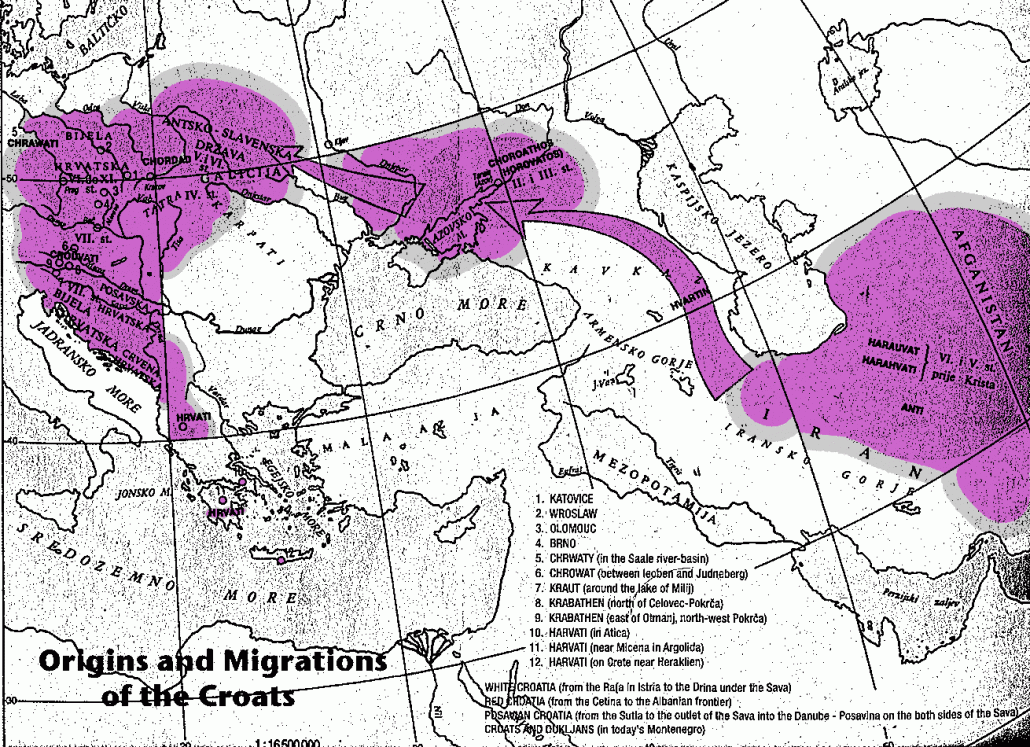 Croatian map providing an overview of the east-west links between the Croats and the ancient Iranian realms (Source: Croatia in English).
Croatian map providing an overview of the east-west links between the Croats and the ancient Iranian realms (Source: Croatia in English).
Croatian elements among Serbs
Furthermore, even if the Serbs represent primarily the descendants of round-headed Slavs, there has been much Croat infusion into the Serb genetic stock. Thus, Mandic estimates that one-third of Serbs are ethnically Croat:
“Our investigations have led us to believe that of the Serbs presently in Bosnia and Herzegovina 32 to 35% are descended from Orthodox Croats, 50 to 52% are from non-Slavic Wallachs, 6 to 7% are from Serbianized Bulgarians, Greeks, Armenians and Albanians and 8 to 10% from genuine ethnic Serbs who came there mainly during Austro-Hungarian rule and during the time of the two Yugoslavias” (Mandic 1970, ch.7).
Jats
Where do the Jats come into this? Now, the Jats are generally held to be of Scythian descent. The Jat-Sikhs are also of Saka descent, for indeed the very name “Sikh” is derived from “Saka” (Sara 1978). Noted historian Satya Shrava notes:
“The Jats are none other than the Massagetae (Great Getae) mentioned in Diodorus as an off-spring of the ancient Saka tribe…. a fact now well-known” (Shrava 1981, p.2-3).
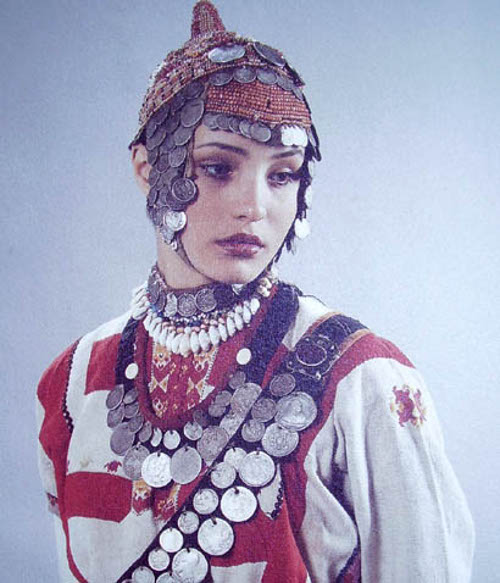 Sikh girl dressed in the ancient attire of her ancient Saka/Scythian ancestors (Source: Sikh Archives). The ancient Iranic legacy is still seen in the word for “Punjab” (Panj-Ab: Five waters/Rivers) and other Punjabi words of Persian origin such as “asemana” (sky; aseman in Persian), etc.
Sikh girl dressed in the ancient attire of her ancient Saka/Scythian ancestors (Source: Sikh Archives). The ancient Iranic legacy is still seen in the word for “Punjab” (Panj-Ab: Five waters/Rivers) and other Punjabi words of Persian origin such as “asemana” (sky; aseman in Persian), etc.
Eminent scholars like Tod, Toynbee, Trevaskis, Keene, Kephart, Dhillon, Dahiya, Prakash and Bingley directly or indirectly connected Jat, Goths and Scythians. Thus, the famed Anglo-American historian Toynbee notes:
“It may not be fantastic to conjecture that the Tuetonic-speaking Goths and Gauts of Scandinavia may have been descended from a fragment of the same Indo-European-speaking tribe as the homonymous Getae and Thyssagetae and Massagetae of the Eurasian Steppe who are represented today by the Jats of the Panjab.” (Toynbee 1934, p.435).
Furthermore, some scholars hold that the Scythians and Iranics originated in the Punjab and from thence migrated across the world. Whatever the details of the original home of the Iranoid race itself, all scholars agree that the Jats, Serbs and Croats predominantly belong to the same ethnic stock.
Conclusion
It is a pity that Dr. K.S. Singh, former DG, Anthropological Survey of India, erroneously asserted there was no Jat-Serb connection (Indian Express, 21/9/2003). Compounding this, he went further and wrongly bracketed Jats into what he called an “Indo-Pak stock”. This is a term non-existent in standard anthropology. Indeed, Pakistan was first created in 1947. How can the DG’s hypothetical “Indo-Pak stock” by any stretch of the imagination refer to ancient history? The length of this article has been necessitated in order to provide sufficient counterweight to the DG’s misleading statements. He is invited to read the references contained in this article and correct himself.
It is thus clear, Belgrade was indeed an appropriate choice for the location of the World Jat Congress. This article amply shows that close kinsmen of the Jats abound all across the Balkans and Eastern Europe. Now, given the tragic recent history of the Serb-Croat divide during the break-up of Yugoslavia, it might be more advisable to first establish Jatism in Croatia, for it is in Croatia that the Iranic connection has recently become official history. Sadly, Serbian historians are still split between the Slavic and Iranic theories. Once the first base has been established in Croatia, one may look beyond to the surrounding regions to develop further Jat connections in the Balkans.
References
Beshevliev 1967: “Iranian elements in the Proto-Bulgarians” by V. Beshevliev (in Bulgarian)(Antichnoe Obschestvo, Trudy Konferencii po izucheniyu problem antichnosti, str. 237-247, Izdatel’stvo “Nauka”, Moskva 1967, AN SSSR, Otdelenie Istorii) http://members.tripod.com/~Groznijat/fadlan/besh.html
Dobrovich 1963: “Volk an der Grenze – Schicksal und Auftrag. Zur Geschichte der burgenlaendischen Kroaten,” (People on the Border – History of the Burgenland Croats), by Johann Dobrovich, Burgenlaendische Forschungen, vol.47, Prov. Archive of Burgenland, Eisenstadt 1963, tr by Frank Teklits; http://archiver.rootsweb.com/th/read/BURGENLAND-NEWSLETTER/1999-07/0931520170
Dodan 1994: “Bosna and Hercegovina, a Croatian land”, by Sime Dodan, Meditor, Zagreb, 1994.
Dvornik 1956: “The Slavs. Their Early History and Civilization.” by F. Dvornik, American Academy of Arts and Sciences, Boston, USA., 1956.
Guldescu 1964: “History of Medieval Croatia”, by Stanko Guldescu, Mouton (pub), The Hague, 1964; http://www.raceandhistory.com/Science/croatia.htm
Hina 2000: “Scholars assert Croats are Descendants of Iranian Tribes”, Hina News Agency, Zagreb, Oct 15, 2000 (http://www.hina.hr)
Lozinksi 1964: “The Name Slav” by B. Philip Lozinski (Essays in Russian History, Archon Books,1964) http://members.tripod.com/~Groznijat/fadlan/lozinski.html
Malcolm 1996: “Bosnia: A Short History”, by Noel Malcolm, New York University Press, New York, 1994; 1996, new ed.
Mandic 1970: “Croats and Serbs – Two old and different nations,” by Dr. O. Dominik Mandic, Chicago 1970, Nakladni Zavod Matice Hrvatske, Zagreb, 1990; tr. Vicko Rendic & Jacques Perret, http://www.magma.ca/~rendic/
Sakac 1937: “Del origen caucaso-iranio de los croatas” (“Of the Caucasian-Iranian ancestry of the Croats”) by S. Sakac, Zagreb 1937.
Sakac 1949: “Iranisehe Herkunft des kroatischen Volksnamens”, (“Iranian origin of the Croatian Ethnonym”) S. Sakac, Orientalia Christiana Periodica. XV (1949), 813-340.
Sakac 1955: “The Iranian origin of the Croatians according to Constantine Porphyrogenitus”, by S. Sakac, in “The Croatian nation in its struggle for freedom and independence” (Chicago, 1955); for other works by
Sakac, cf. “Prof. Dr. Stjepan Krizin Sakac – In memoriam” by Milan Blazekovic, http://www.studiacroatica.com/revistas/050/0500501.htm
Salzman 1999: “Book Review: Noel Malcolm, Bosnia” by Todd Salzman, Creighton Univ.; J. Religion & Society, Vol.1 (1999), http://moses.creighton.edu/JRS/1999/1999-r1.html
Sara 1978: “The Scythian Origin of the Jat-Sikh”, I.Sara, The Sikh Review, 1978, pp. 15-27 (pt.1), pp. 214-233 (pt.2) (http://www.sikhreview.org)
Schmitt 1985: “Iranica Proto-Bulgarica” (in German), Academie Bulgare des Sciences, Linguistique Balkanique, XXVIII (1985), l, p.13-38; http://members.tripod.com/~Groznijat/bulgar/schmitt.html
Shrava 1981: “The Sakas in India”, S.Shrava, Pranava Prakashan, New Delhi 1981.
Sulimirski 1970: “The Sarmatians,” by T.Sulimirski, Thames & Hudson, London, UK, 1970.
Tomicic 1998: “The old-Iranian origin of Croats”, Symposium proceedings, Zagreb 24.6.1998, ed. Prof. Zlatko Tomicic & Andrija-Zeljko Lovric, Cultural center of I.R. of Iran in Croatia, Zagreb, 1999, ISBN 953-6301-05-5, http://www.hindunet.org/saraswati/croats2.PDF
Toynbee 1934: “A Study of History,” by A. Toynbee, Vol. 2., Oxford University Press, London, 1939, 1st pubd in 1934; cited by Sunny Singh (pers. comm.)
Vernadsky 1952: “Der sarmatische Hintergrund der germanischen Voelkerwanderung,” (Sarmatian background of the Germanic Migrations), G. Vernadsky, Saeculum, II (1952), 340-347.

